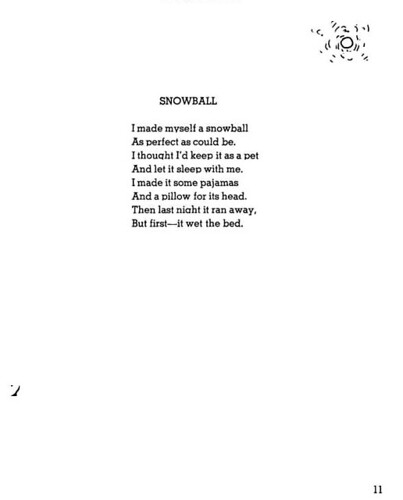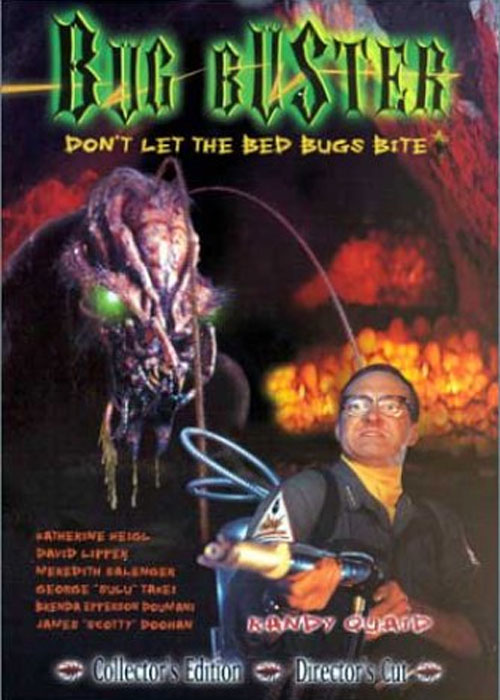
It takes a special kind of adult to truly get inside a child's head. We so often forget the whimsical, imaginative world of childhood as we're hardened by our collective cynical ascendancy to adulthood. It's rare to find a grown-up who is able not only to get in touch with his inner child, but who is able to bring it to the surface and forge a lucrative career from it. While his friends are off becoming doctors and lawyers, he's got to be content with writing poetry about ponies and dragons. It's a tough job, certainly, but someone's got to do it.
Granted, Shel Silverstein is a special case in children's book authorship; his extensive range of career endeavors would likely make many parent purchasers of A Light in the Attic or Falling Up blush. Silverstein's work spanned drawing cartoons for Playboy magazine to writing STD-laden songs entitled "Don't Give a Dose to the One you Love the Most." And did I mention he wrote Johnny Cash's country music hit "A Boy Named Sue?" Oh, right, and in the late 80s he wrote nine plays for adult audiences. You can't say the man didn't have varied interests; Silverstein squeezed several lifetimes worth of lucrative artistic careers into a mere 67 years. Not too shabby.
To generations of kids in the mid-to-late 20th century, Silverstein provided us with a certain silliness that was simultaneously irreverent and irresistible. Not all parents were crazy about the sometimes inane and often ridiculous content in his poetry, but Silverstein undeniably sparked a love of reading in children. For the most part, adults were just happy to see their kids excited about reading; it may have not have been heavy literature--I don't think a poem entitled "Ickle Me Pickle Me Tickle Me Too" registers in that class--but it was reading nonetheless. It was enough to make even the begrudgingest readers among us pick up a book of our own will and accord. That's pretty strong stuff.

Silverstein's unique sense of word choice and clever use of double meanings paired with cute illustrations provoked delight in young children. Finally, here was something right on pitch with the mysterious inner workings of a child's brain. Based on Silverstein's astronomical success, the recipe for writing a really effective children's poem seems to be as follows: write something kind of crazy. Show it to an adult. If the adult think it's crazy, stop drilling; you've hit children's literary oil. It's a tried and true formula: if adults find something to be crude and distasteful, that's the ultimate litmus test of its potential appeal to children.
Children have a far likelier propensity for possessing a sense of humor than their grown-up counterparts, so this formula was right on target. Silverstein found monumental success with his children's poetry anthologies, outlasting some of the 90s' most persistent blockbuster authors on the New York Times Bestseller list. "A Light in the Attic" spent a remarkable 182 weeks on the list following its 1981 release, proving that books geared toward children can have serious mass market appeal.
There was, admittedly, a certain naughtiness to his children's poetry that made children devour it so gleefully. Many of the poems included PG-rated punchlines or humorously violent turns of events that delighted children with its unexpectedness. For example:
That's funny, right? Come on, you know it's a little bit funny. That illustration is killer. Admittedly, toilet humor was prevalent, but it was used cleverly and quietly, like this:

All in all, fairly innocent stuff. It's not exactly racy content, it's just a joke. You know, those things with the set-ups, the misdirections, and the surprise endings? Kid love 'em.
Unfortunately, not everyone was on board with Silverstein's sense of humor. Wherever you find someone trying to bring something fun and enjoyable to children, you undoubtedly find a group of sour-faced adults hell-bent on killing every last speck of joy and laughter. Naysaying parents argued against a few specific poems, citing their content as being inappropriate for children and encouraging disrespectful and anti-authority behavior.
Some found contention with this poem in particular:

What a group of killjoys, huh? The phrase "lighten up" was coined with this group of ignorant indignants in mind. If your child reads this and immediately proceeds to your kitchen to smash dishes one by one in a subversive manner, then we'll talk. Until that point, we might all want to work on developing at least a mild sense of humor. It might diffuse some of that tension that's sure to arise from the brooding resentment your kids will unleash on you twenty years down the road.
Another poem from A Light in The Attic caught even more flack from sanctimonious parents for its allegedly outraging message. "Little Abigail and the Beautiful Pony" detailed the story of a little girl who begged her parents for a pony, telling them she would die without it. They refused her the pony, as parents are wont to do, and she did indeed die. The poem closes with the line, "This is a good story to read your folks when they won't buy you something you want." Holy banned books, that's funny stuff.
It seems the moral of the story is that it's probably okay to expose kids to humorous material. In fact, I'd even prescribe it for your own children, if you have any. I'm not a doctor, though, so you might want to check with a professional before administering that hilarious treatment. Either way, I'd venture it's a pretty safe bet to say your kids aren't going to develop into antisocial sociopaths for having read a clever poem or two. Just a hunch.
We all read it, and we turned out okay, right? Well, to a point at least. Our snarkiness and self-satisfied sense of irony had to come from somewhere, right? Whatever the potentially damaging impact alleged by parent groups, the positive impact of children enjoying reading outweighs the negative of ending up incredibly uptight, humorless, and unyielding. So, thanks, Shel. We'll see you where the sidewalk ends.

















